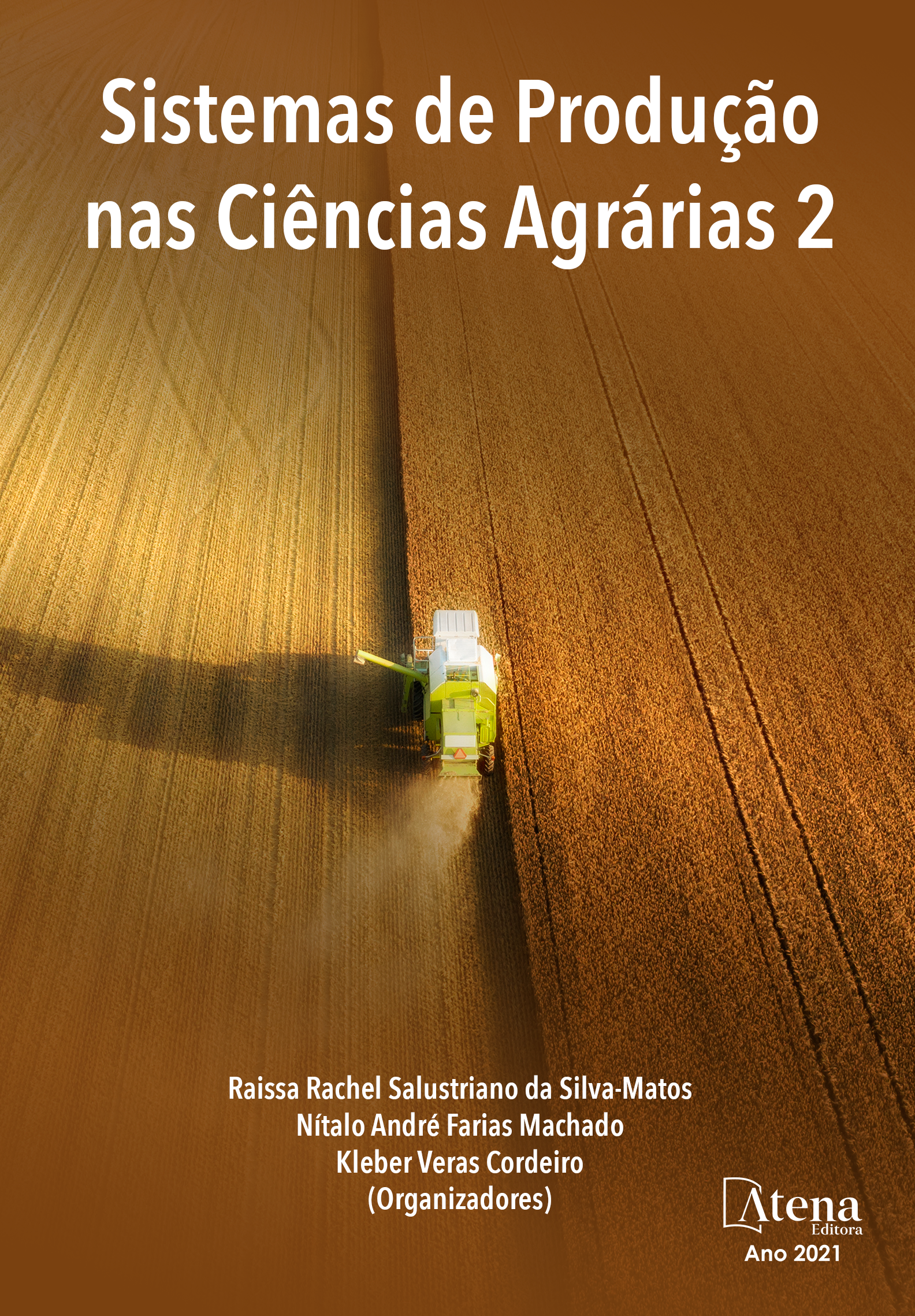
DESEMPENHO DO TOMATE CEREJA SOB DIFERENTES TAXAS DE REPOSIÇÃO DA EVAPOTRANSPIRAÇÃO E TIPOS DE ADUBAÇÃO
O manejo adequado da lâmina de irrigação e do tipo de adubação são fundamentais para o desenvolvimento do tomateiro. Objetivou-se com este estudo avaliar o desempenho do tomate cereja sob diferentes taxas de reposição da evapotranspiração da cultura e tipos de adubação em ambiente protegido. O experimento foi conduzido em casa de vegetação. O delineamento experimental foi em blocos casualizados e esquema fatorial 5 x 3, com cinco repetições. Os fatores estudados consistiram de cinco taxas de reposição da evapotranspiração da cultura (70; 85; 100; 115 e 130% da ETc) e três tipos de adubação (Solo sem adubação (testemunha), adubado com NPK e adubado com húmus de minhoca). O volume de água para reposição das perdas por ETc foi estimado com auxílio de um mini tanque e o sistema de irrigação por gotejamento. Avaliaram-se aos 12, 36, 60, 84, 108 e 120 dias após o transplantio, as variáveis de crescimento e produção do tomateiro cereja. O crescimento do tomateiro cereja vermelho foi influenciado tanto pelas diferentes taxas de reposição da evapotranspiração como pelos tipos de adubação. A adubação orgânica associada à taxa de reposição da ETc de 100% resultou em maiores taxas de crescimento absoluto e relativo da área foliar. As plantas irrigadas com taxa de reposição de 130% da ETc e fertilizadas com adubo orgânico resultou em maior acúmulo de fitomassa. A área foliar influenciou positivamente na produção de frutos do tomateiro cereja vermelho quando correlacionadas.
DESEMPENHO DO TOMATE CEREJA SOB DIFERENTES TAXAS DE REPOSIÇÃO DA EVAPOTRANSPIRAÇÃO E TIPOS DE ADUBAÇÃO
-
DOI: 10.22533/at.ed.12021030210
-
Palavras-chave: Cerasiforme, irrigação, fertilização, ambiente protegido.
-
Keywords: Cerasiforme, irrigation, fertilization, protected environment.
-
Abstract:
The proper management of the irrigation blade and the type of fertilization are essential for the development of the tomato. The objective of this study was to evaluate the performance of cherry tomatoes under different rates of crop evapotranspiration replacement and types of fertilization in a protected environment. The experiment was conducted in a greenhouse. The experimental design was in randomized blocks and a 5 x 3 factorial scheme, with five replications. The studied factors consisted of five crop evapotranspiration replacement rates (70; 85; 100; 115 and 130% of ETc) and three types of fertilization (Soil without fertilization (control), fertilized with NPK and fertilized with earthworm humus). The volume of water for replacement of losses by ETc was estimated with the aid of a mini tank and the drip irrigation system. The variables of growth and production of cherry tomatoes were evaluated at 12, 36, 60, 84, 108 and 120 days after transplanting. The growth of red cherry tomatoes was influenced both by the different replacement rates of evapotranspiration and by the types of fertilization. Organic fertilization associated with a 100% ETc replacement rate resulted in higher rates of absolute and relative leaf area growth. Plants irrigated with a replacement rate of 130% of ETc and fertilized with organic fertilizer resulted in greater accumulation of phytomass. The leaf area had a positive influence on the production of red cherry tomato fruits when correlated.
-
Número de páginas: 18
- Patrícia Ferreira da Silva
- Vitória Ediclécia Borges
- Raucha Carolina de Oliveira
- Semako Ibrahim Bonou
- Luciano Marcelo Fallé Saboya
- José Dantas Neto
- Rigoberto Moreira de Matos


